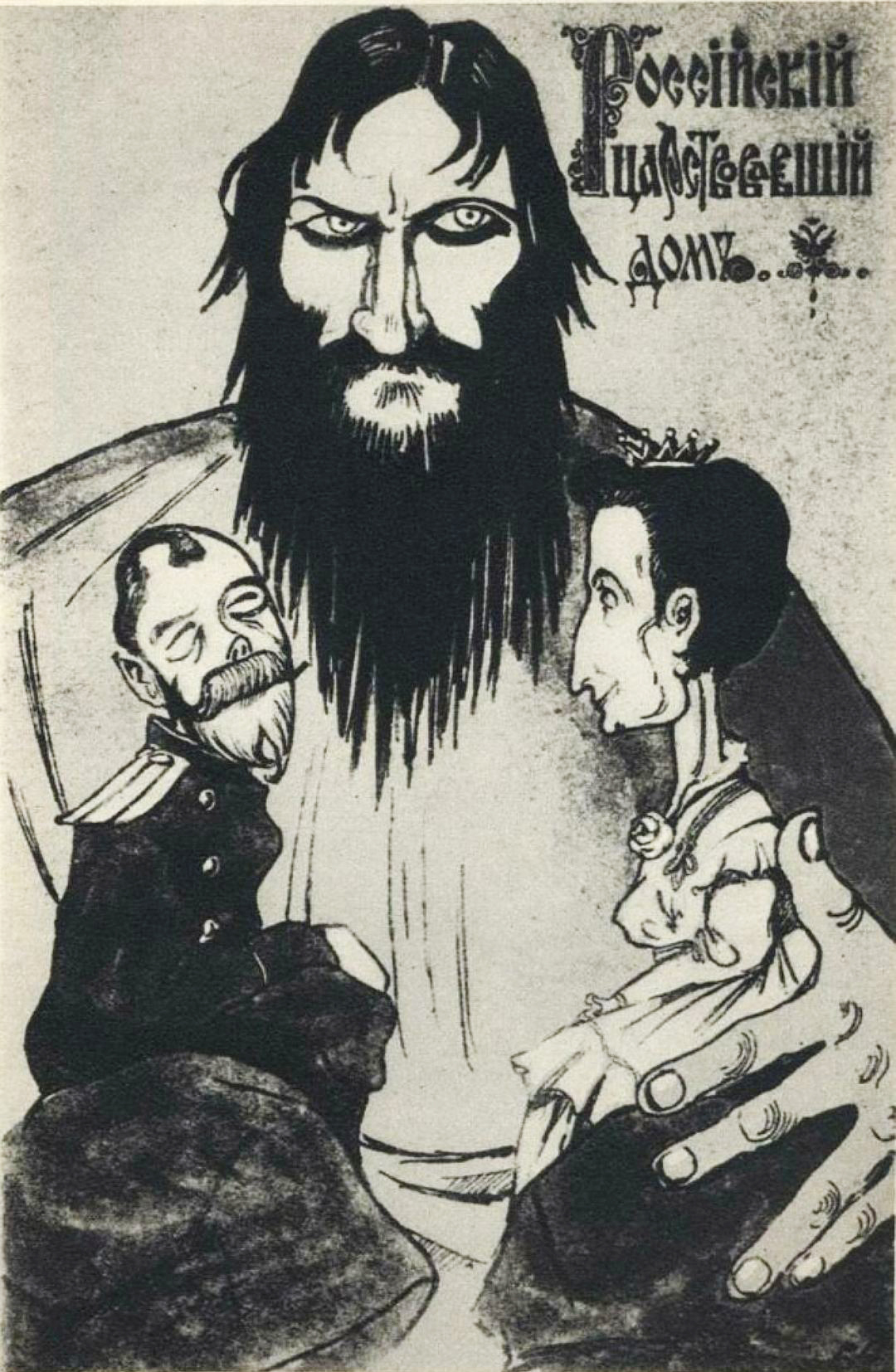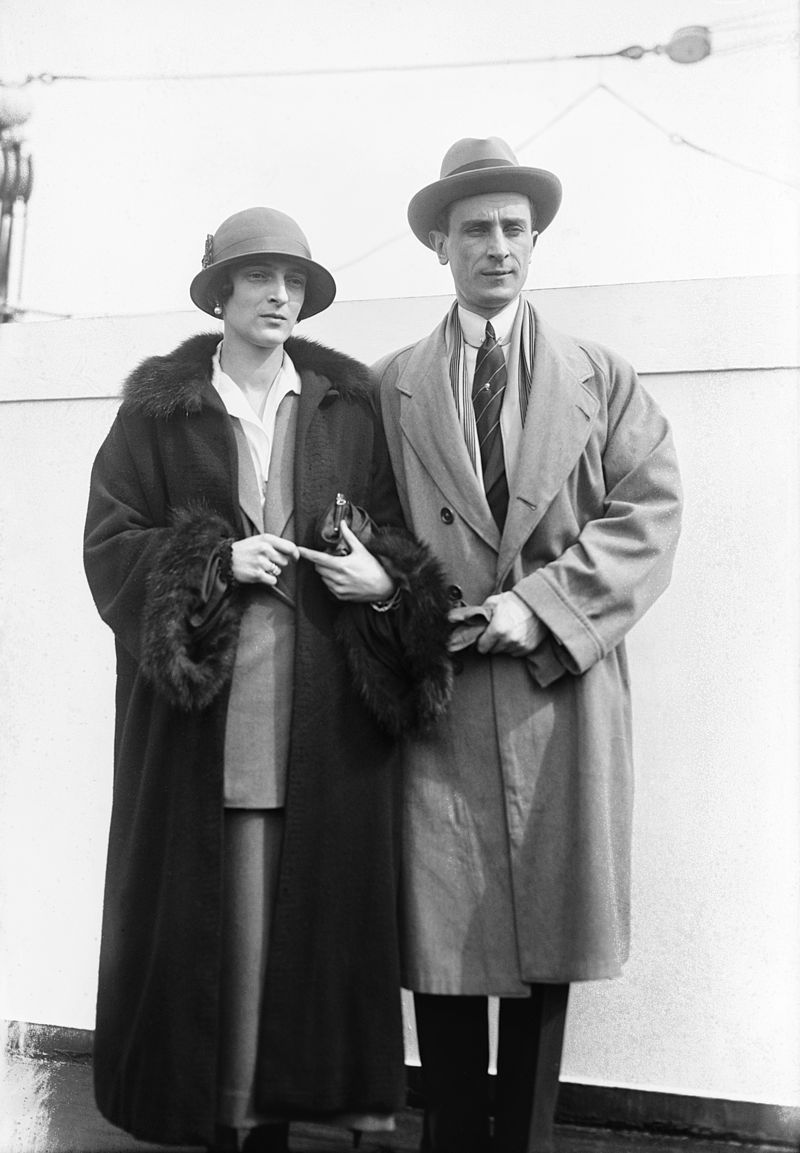by Susan Flantzer
© Unofficial Royalty 2018

Grigori Yefimovich Rasputin in 1916; Credit – Wikipedia
On November 26, 1894, in the Grand Church of the Winter Palace in St. Petersburg, Russia, Nicholas II, Emperor of All the Russias married Princess Alix of Hesse and by Rhine, the youngest surviving daughter of Ludwig, Grand Duke IV of Hesse and by Rhine and Princess Alice of the United Kingdom, a daughter of Queen Victoria. Upon her conversion to Russian Orthodoxy, Alix was given the name Alexandra Feodorovna. After giving birth to four daughters during the first seven years of her marriage, Alexandra felt great pressure to provide an heir. Finally, in 1904, she gave birth to a son Alexei. However, it would soon become apparent that she was a carrier of hemophilia, and her young son was a sufferer. This would cause great pain to Alexandra, and great measures were taken to protect him from harm and to hide the illness from the Russian people. When Alexei’s illness eventually became public knowledge, it led to more dislike for Alexandra, with many of the Russian people blaming her for the heir’s illness.
After working with many physicians to help Alexei who suffered greatly, Alexandra turned to mystics and faith healers. This led to her close, disastrous relationship with Grigori Yefimovich Rasputin, a Russian peasant and mystical faith healer. Several times Rasputin appeared to have brought Alexei back from the brink of death, further cementing Alexandra’s reliance on him. To many historians and experts, this relationship would contribute greatly to the fall of the Russian monarchy.

Rasputin with Alexandra Feodorovna, her children, and the children’s nurse in 1908; Credit – Wikipedia
Rasputin became an influential figure in Saint Petersburg, especially after August 1915, when Nicholas II took supreme command of the Russian armies fighting in World War I. Eventually, a group of conspirators plotted to murder Rasputin, hoping to end his influence over the Imperial Family.

Rasputin, Nicholas, and Alexandra, anonymous caricature in 1916; Credit – Wikipedia
The conspirators were led by two men, one a member of the Imperial Family and one who married into the Imperial Family. Grand Duke Dmitri Pavlovich of Russia was the second child and only son of Grand Duke Paul Alexandrovich, a son of Alexander II, Emperor of All the Russias, and Princess Alexandra of Greece, a daughter of King George I of Greece and Grand Duchess Olga Konstantinovna of Russia. Therefore, Dmitri was the first cousin of Nicholas II as their fathers were brothers. (A side note, Dmitri is also the first cousin of Prince Philip, Duke of Edinburgh as Dmitri’s mother and Philip’s father were siblings.) Prince Felix Felixovich Yusupov was a Russian aristocrat who was wealthier than any of the Romanovs. Felix married Princess Irina Alexandrovna of Russia, Nicholas II’s only niece, the daughter of his sister Grand Duchess Xenia Alexandrovna of Russia and Grand Duke Alexander Mikhailovich of Russia.

Grand Duke Dmitri Pavlovich of Russia, before 1917; Credit – Wikipedia

Prince Felix Yusupov, 1914; Credit – Wikipedia
Along with Dmitri and Felix, Vladimir Purishkevich, a deputy of the Duma, the Russian legislature, was one of the main conspirators. Dr. Stanislaus de Lazovert, a physician, and Sergei Mikhailovich Sukhotin, a lieutenant in the Preobrazhensky Regiment, were also participants. On the night of December 29-30, 1916, Felix invited Rasputin to Moika Palace, his home in St. Petersburg, promising Rasputin that his wife Irina would be there, although she was not there. According to his memoir, Felix brought Rasputin to a soundproof room in a part of the wine cellar and offered Rasputin tea and petit fours laced with a large amount of cyanide, but the poison had no effect.
Felix then offered Rasputin wine, and after an hour Rasputin was fairly drunk. The other conspirators were waiting in a room on another floor of the palace and Felix then went upstairs and returned with Dmitri’s revolver. He shot Rasputin in the chest and the wounds appeared to be serious enough to cause death. However, Rasputin escaped, struggling up the stairs and opening an unlocked door to the courtyard. Purishkevich heard the noise, went out to the courtyard, and shot Rasputin four times, missing three times. Rasputin fell in the snow. Again, Rasputin should have been dead, but he was still moving. One of the conspirators shot him in the forehead. Rasputin’s body was thrown off the Bolshoy Petrovsky Bridge into an ice-hole in the Malaya Neva River. His body was found a few days later.

Police photograph of Rasputin’s corpse, found floating in the Malaya Nevka River; Credit – Wikipedia
Rasputin was buried on January 2, 1917, at a small church at Tsarskoye Selo, near St. Petersburg. Members of the Imperial Family attended his funeral. Rasputin’s body was exhumed and burned by a detachment of soldiers shortly after Nicholas II abdicated in March 1917 to prevent his burial site from becoming a place of pilgrimage.
After Rasputin’s murder, the St. Petersburg authorities refused to arrest the conspirators because the murder they committed was considered acceptable. Instead, Dmitri was exiled to Persia (now Iran), a move that most likely saved his life during the Russian Revolution, and Felix was exiled to his estate in Rakitnoje, near Belgorod, Russia and the Ukraine border.
After the Russian Revolution, Dmitri lived in exile in Paris where he had an affair with the fashion designer Coco Chanel. He married American heiress Audrey Emery in 1926, but the couple divorced in 1937. The marriage produced one child, Paul Ilyinsky, an American citizen, served as a US Marine in the Korean War, and was elected mayor of Palm Beach, Florida. Dmitri died from tuberculosis at a Swiss sanatorium in 1942 at the age of 50.

Dmitri with his wife Audrey Emery, 1920s; Credit – Wikipedia
Felix and his wife Irina escaped Russia in 1919 aboard the British battleship HMS Marlborough along with Irina’s grandmother Dowager Empress Maria Feodorovna (born Princess Dagmar of Denmark) and other members of the Imperial Family. Felix and Irina lived in exile in Paris. Felix died in 1967 at the age of 80 and Irina died three years later at the age of 74.

Felix and Irina in exile, 1930s, Credit – Wikipedia
This article is the intellectual property of Unofficial Royalty and is NOT TO BE COPIED, EDITED, OR POSTED IN ANY FORM ON ANOTHER WEBSITE under any circumstances. It is permissible to use a link that directs to Unofficial Royalty.
